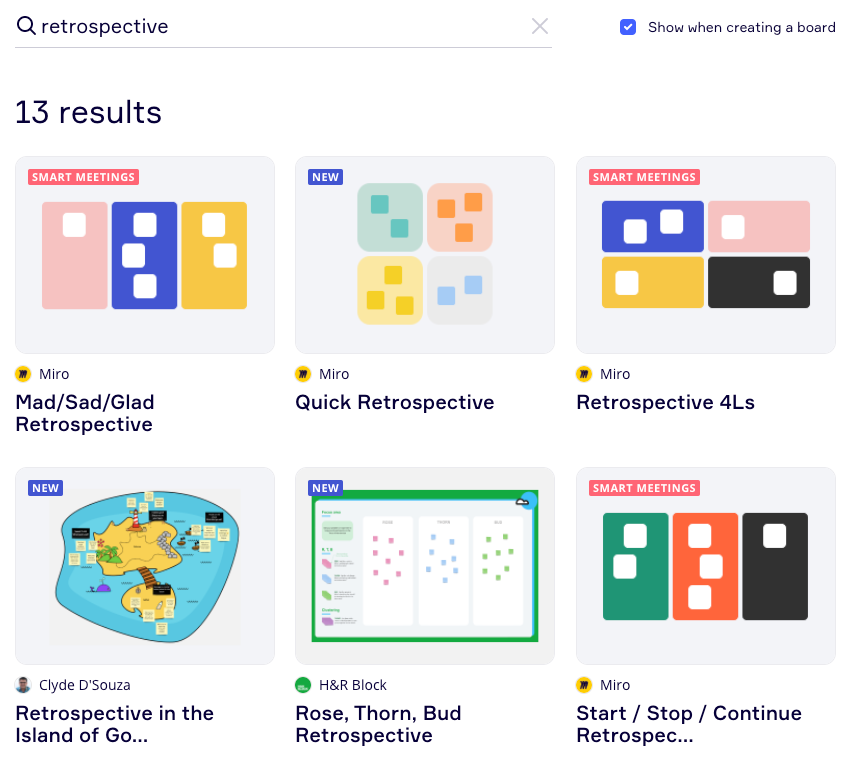How to double the speed of your retrospectives

Retrospectives are critical for your team’s development. It is where you find better ways of doing things. They also help you identify and spread the use of good practices.
But retros do take up time. Team members have enough meetings as is, and often complain that retrospectives take too long and achieve too little.
In this blog you will learn a few practices that can speed up your retrospectives.
The basic structure of a retrospective
Before we dive into the go-faster tips, it is a good idea to look at the structure of a retrospective. Because even a fast retrospective needs to contain a few basic elements.
The retro can be split into three parts:
- Exploration
- Analysis
- Actions
Exploration
In the exploration part, the facilitator asks the participants to identify issues they would like to discuss during the retro. People typically write their issues on post-it notes or Miro board tickets. After a minute or two, the tickets are reviewed together, so everyone understands every ticket. Then the team takes a vote to decide which ticket(s) gets to the next stage.
Analysis
In the analysis part, the team discusses the chosen issues and attempts to analyze root causes. It is too easy to jump to conclusions. Good teams spend time and ask questions to find out what truly is behind the problem. When we look at fast retrospective methods, keep this in mind. Even when going fast, we have to remember to try to tackle true root causes.
Action
In the action part, the team tries to find actions that could help solve the problem that is considered. The actions must be realistic, and preferably within the team’s control. Sometimes things need to be escalated to outside the team. This can be planned and discussed too.
Don’t forget to load any actions to next sprint
It is a good practice to create tickets to the next sprint backlog for any actions that the team agrees should be done. The sprint backlog tickets allow the team to spend the time to perform the action, and remind the team so that the action is not forgotten.
How to make retros faster
Let's now look at some ways how you can make your retrospectives faster.
Use good remote retro tools
Faster, more efficient retrospectives require good tools. One of my favorites is Miro. In Miro, you can click on a “quick retrospective” button, or choose from other retrospective board templates.

Electronic whiteboards such as Miro are essential for a fast retro. It allows you to set timers for the different stages of the retro, and allows all the participants to work simultaneously. Try it a few times, and as team members become more familiar with the tool, you can speed things up.
Have mini-retros
A mini-retro focuses on one single issue or problem. It could also be called ad-hoc retro, because the best way to organize a mini-retro is immediately after the problem has been noticed, fixed or a workaround has been put into place.
Some rules for mini-retro:
- Only the involved people participate (not the full team)
- Have it immediately after the event (do not wait for the end of the sprint)
- Ask the following questions:
- What happened?
- What was supposed to happen?
- Why the difference?
- What would we do differently next time?
Mini-retros can be seen as enforced learning tools. The result of the retro is better understanding how similar situations are handled in the future.
Follow up actions from the mini-retro could be for example:
- Share information to others in the organization about the problem and solution
- Update instructions and documents to avoid similar problems in the future
Anyone could call a mini-retro. The team should agree on a signal to call for a mini-retro. A good Scrum Master would coach the team to notice opportunities for mini-retros, and encourage the practice to take root. The consideration for a mini-retro could also be a part of the daily scrum ceremony, and follow immediately after the daily.
Prepare well for your retro
A good way to win time in a retro is to have the initial exploration stage done before the meeting. The facilitator can send out the Miro board link to the participants a few days earlier, and everyone can spend time on their own to list issues.
The benefit of this approach is that the writing of the tickets is not rushed. The tickets should be kept short and understandable.
In the beginning of the retro, the team can use silent meetings rules, and everyone can read through the tickets silently. Then there can be an opportunity to ask questions. Next, the team can vote and then progress directly to the analysis stage.
Preparation and silent reading can make the beginning of the retrospective faster, allowing more time to be spent on the analysis and actions stage.
One example of a retro with preparation is the pain snake retrospective.
Limit your retro to 30 minutes
The basis for the 30 minute retro is a strict time boxed agenda. For example:
- 2 minutes for the exploration stage
- 3 minutes for questions and understanding of the tickets
- 1 minute for voting
- 12 minutes for root cause analysis of chosen issue
- 10 minutes for planning actions
- 2 minutes for summary and closing
The strict time boxed agenda can focus the retro on the most pressing problem only. This can be a good thing.
Quicker retrospectives can help if your team sees retros as wasting time
Retrospectives are essential for good team performance. But if the team objects to using the traditional one hour for a retrospective, you can try these tips to make your retros faster.
It is better to have retros regularly than to postpone or cancel them, or have a retro only every six months. These go-faster tips work equally well in retros that are held at the end of the sprint, and in ones that are held at some other time.
Published:
Updated:


